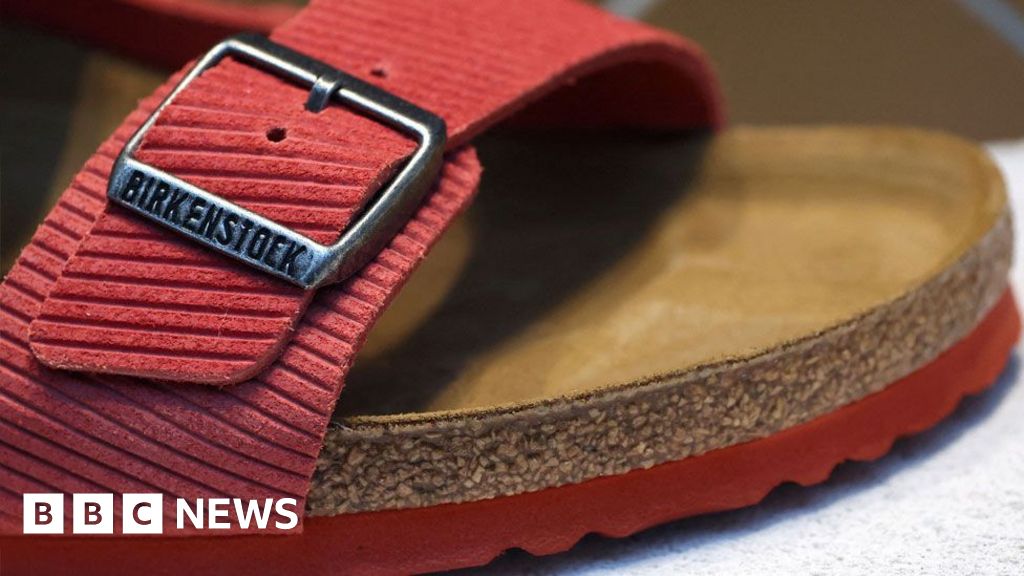Birkenstock’s Design Battle: Are Sandals Works of Art?
Table of Contents
- 1. Birkenstock’s Design Battle: Are Sandals Works of Art?
- 2. German Law and Design Protection
- 3. History of the Birkenstock rise to Fame
- 4. Practical Design vs Artistic Expression
- 5. What elements of German design law did the court use to justify it’s decision in the Birkenstock case?
- 6. Birkenstock’s Design Battle: A Conversation with Experts
- 7. part 1: The Legal Perspective
- 8. Part 2: Birkenstock’s Iconic Design
- 9. Part 3: Art vs. Design in consumer Goods
- 10. Part 4: The aesthetics of Practicality
- 11. Part 5: A word from the Designer
Teh iconic Birkenstock sandal, popularized by actress Margot Robbie in the “Barbie” movie, might be a fashion statement today, but a German court has ruled it is not a work of art.
The Federal Court of Justice, Germany’s top civil court, delivered the final judgement in a case brought by Birkenstock against three manufacturers and retailers accused of copying it’s designs.While Birkenstock argued its sandals were iconic designs deserving of protection,the court disagreed,stating that the shoes served a practical purpose and lacked the individual creativity necessary to be classified as art.
German Law and Design Protection
German law distinguishes between design and art. Design, according to the court, serves a practical purpose, unlike works of art which require a higher degree of individual creativity. Presiding judge Thomas Koch ruled that Birkenstock’s claim was “unfounded.”
The company responded to the ruling by stating that it “continues its fight against copycats with undiminished vigour,” vowing to exhaust all legal means to defend itself against imitations.
History of the Birkenstock rise to Fame
Birkenstocks have come a long way from their humble beginnings. Introduced in the 1960s, the original leather-strapped sandals were initially considered unfashionable. Though, they gained traction for their comfort and support, eventually finding a place on the feet of celebrities like supermodel Kate Moss in the 1990s and even gracing the red carpet at the Academy Awards.
This surge in popularity culminated in Birkenstock successfully listing on the New York Stock Exchange in 2023 with a valuation of around $8.6 billion (£7.08 billion), double its worth from 2021.
Practical Design vs Artistic Expression
This court case raises intriguing questions about the intersection of design and art, particularly in the context of mass-produced consumer goods. While Birkenstocks undeniably boast a distinctive design, the court’s decision highlights the legal distinction between functionality and artistic expression.
The debate surrounding Birkenstock’s status as art versus practical design is highly likely to continue. Nevertheless, the company’s enduring popularity and iconic status, fueled by both practicality and cultural appeal, ensure that the Birkenstock story will continue to unfold.
In a world obsessed with aesthetics and individuality, perhaps the true strength of Birkenstocks lies in their functionality and unassuming charm, qualities that may transcend the boundaries of artistic classification.
What elements of German design law did the court use to justify it’s decision in the Birkenstock case?
Birkenstock’s Design Battle: A Conversation with Experts
part 1: The Legal Perspective
Interviewer (INT): Today, we have Johann Schulze, a renowned German intellectual property lawyer, with us to discuss the recent Birkenstock case. Johann, could you walk us through the key aspects of the German law regarding design protection?
Johann Schulze (JS): Certainly. German law distinguishes between ‘design’ and ‘art’ quite clearly. A design, according to our law, serves a clear, practical purpose. It’s functional, intended for mass production, and often registered as a Community Design or a German Design. Art,on the other hand,requires a higher degree of creativity,individuality,and is typically protected by copyright law.
Part 2: Birkenstock’s Iconic Design
INT: Birkenstock argued that its sandals were iconic designs deserving of protection. What’s your take on the iconic status of Birkenstocks?
JS: Birkenstocks are indeed iconic. They’ve become a symbol of comfort and casual style. However, the court ruled that while they are distinctive and recognizable, they lack the individual creativity required to be classified as a work of art. The design serves a practical purpose – to provide comfortable, supportive footwear – and that was the deciding factor.
Part 3: Art vs. Design in consumer Goods
INT: This case raises intriguing questions about the intersection of design and art, particularly in consumer goods. How do you think this debate will evolve in the future?
JS: I think it’s a valid debate. As consumer goods become more and more innovative in design and manufacture, the lines between art and design will continue to blur. However, I believe the legal distinction will remain, at least in Germany. After all, law frequently enough lags behind societal shifts, and I expect this area won’t be an exception.
Part 4: The aesthetics of Practicality
INT: Johann, do you believe there’s an inherent value in objects that combine functionality and aesthetics, like Birkenstocks?
JS: Absolutely. Objects that serve a practical purpose while also having aesthetic appeal are perhaps the most interesting to me. They speak to our desire for both utility and beauty. Whether they’re legally classified as art or not, they have cultural meaning. And that’s perhaps where the real value lies.
Part 5: A word from the Designer
INT: Now, let’s hear from the other side. We’re joined by Elena klein, head designer at Birkenstock.Elena, how do you interpret the court’s decision?
Elena Klein (EK): The court’s decision doesn’t negate the time and effort we put into designing our sandals.We continue to innovate and create, blending functionality and aesthetics.Our customers understand the value of our products, and that’s what matters most to us.
INT: Elena, with the debate surrounding Birkenstocks’ status as art, how do you approach your designs?
EK: I approach every design with the aim of creating something practical yet beautiful.I believe that’s where the true strength of our sandals lies. We’re not trying to create art; we’re trying to create comfortable, supportive footwear that you want to wear.








